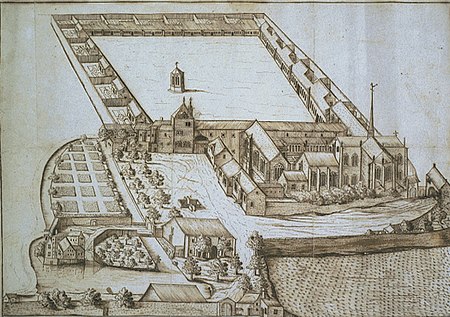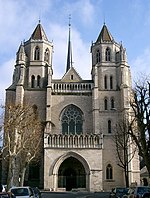Champmol
Arts in the court of Philip the GoodBuildings and structures in DijonBurial sites of the House of ValoisCarthusian monasteries in FranceGothic art ... and 1 more
History of Dijon

The Chartreuse de Champmol, formally the Chartreuse de la Sainte-Trinité de Champmol, was a Carthusian monastery on the outskirts of Dijon, which is now in France, but in the 15th century was the capital of the Duchy of Burgundy. The monastery was founded in 1383 by Duke Philip the Bold to provide a dynastic burial place for the Valois Dukes of Burgundy, and operated until it was dissolved in 1791, during the French Revolution. Called "the grandest project in a reign renowned for extravagance", it was lavishly enriched with works of art, and the dispersed remnants of its collection remain key to the understanding of the art of the period.
Excerpt from the Wikipedia article Champmol (License: CC BY-SA 3.0, Authors, Images).Champmol
Rue Blairet, Dijon La Gare
Geographical coordinates (GPS) Address Phone number Website Nearby Places Show on map
Geographical coordinates (GPS)
| Latitude | Longitude |
|---|---|
| N 47.321681 ° | E 5.017333 ° |
Address
Centre Hospitalier Spécialisé la Chartreuse
Rue Blairet 1
21000 Dijon, La Gare
Bourgogne-Franche-Comté, France
Open on Google Maps








